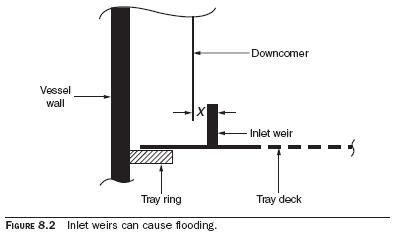Hi there,
I am working on tray hydraulics for process water stripper in a steam cracker plant.
One of the vendors for the column internals (valve trays) has come up with a design change to increase the downcomer clearance to a higher value 65 mm (instead of original value of 60 mm) to be within the max. liquid velocity at downcomer exit(1.5 ft/s or 0.45 m/s).
I understand the reason might be due to the correlation between DC exit velocity and DC outlet area (Vud α 1/ DC outlet area).
Strangely, the vendor did not quote any change in DC outlet area in his revised rating sheet. So, I am wondering if there is any other correlation that i am not aware of.
Awaiting your insightful responses.
Cheers.
I am working on tray hydraulics for process water stripper in a steam cracker plant.
One of the vendors for the column internals (valve trays) has come up with a design change to increase the downcomer clearance to a higher value 65 mm (instead of original value of 60 mm) to be within the max. liquid velocity at downcomer exit(1.5 ft/s or 0.45 m/s).
I understand the reason might be due to the correlation between DC exit velocity and DC outlet area (Vud α 1/ DC outlet area).
Strangely, the vendor did not quote any change in DC outlet area in his revised rating sheet. So, I am wondering if there is any other correlation that i am not aware of.
Awaiting your insightful responses.
Cheers.

